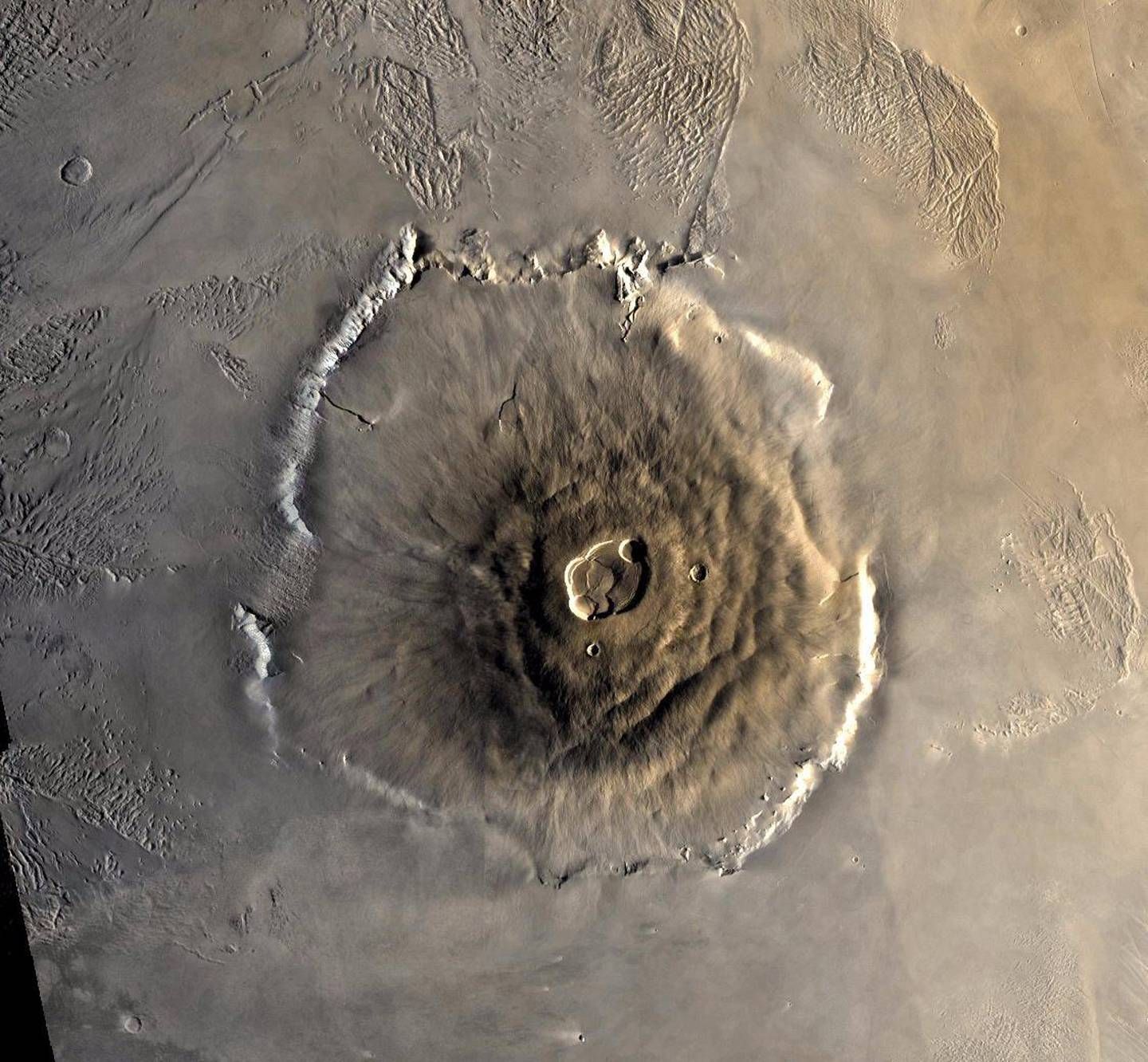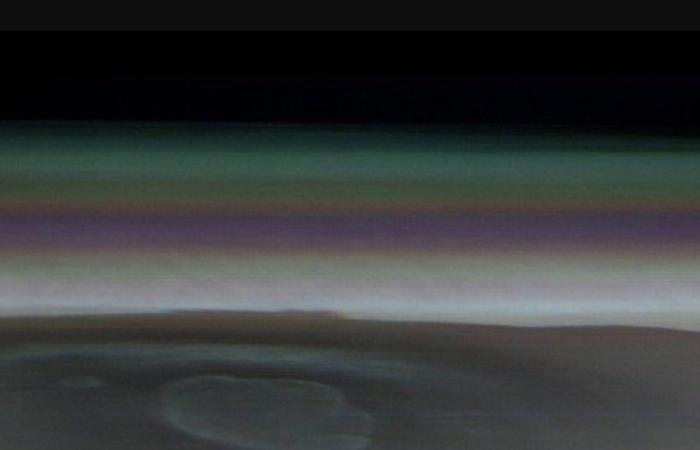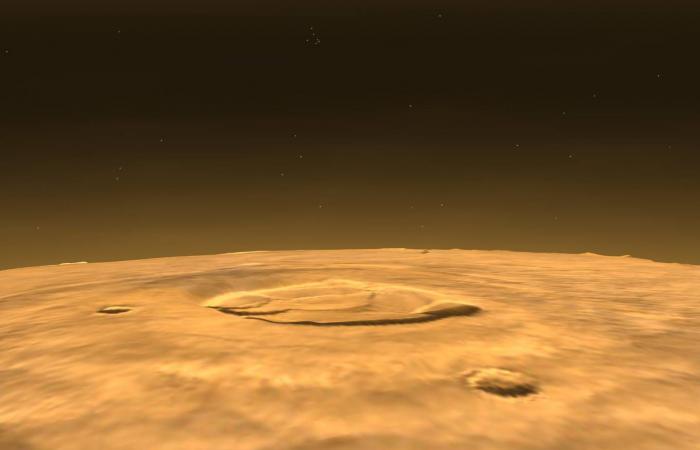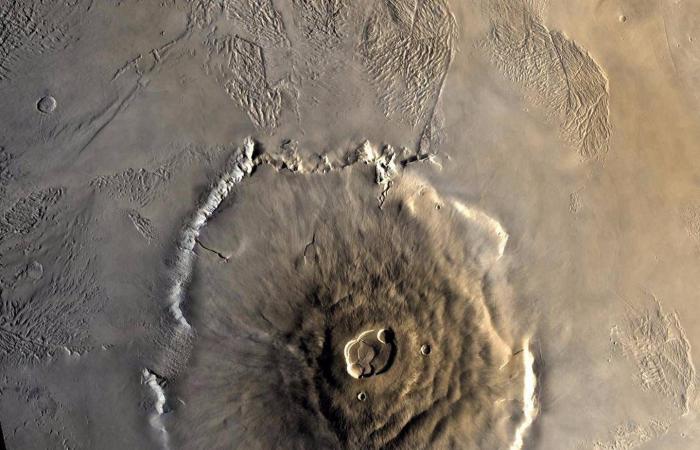NASA’s longest-serving Mars rover, Mars Odyssey, has captured an unprecedented image of Olympus Mons, the largest volcano in the solar system, which covers a large part of the Martian horizon.
This image is part of an ongoing effort by the Mars Odyssey team to provide high-altitude views of the Martian horizon. The first of these views was released in late 2023. Similar to the perspective from the International Space Station, This view allows scientists to study clouds and dust on Mars.
Taken on March 11, The image shows Mount Olympus in its entirety. This volcano, with a base of 600 kilometers, rises to 27 kilometers in height.
“We normally see Olympus Mons in narrow strips from above, but as we turn the spacecraft toward the horizon, we can see its magnitude above the landscape in a single image,” said Jeffrey Plaut, Odyssey project scientist at NASA’s Jet Propulsion Laboratory. “The image is not only spectacular, but also provides us with unique scientific data.”
NASA captures an unprecedented image of Mount Olympus on Mars, offering unique data about the atmosphere of the red planet. (NASA/JPL-CALTECH/ASU/NASA/JPL-CALTECH/ASU)
These images, in addition to capturing clouds and dust, allow scientists to better understand the Martian atmosphere when taken over multiple seasons.
A bluish-white band at the bottom of the atmosphere indicates the amount of dust present at the beginning of autumn, when dust storms usually begin. The purplish layer above is probably due to a mixture of the planet’s red dust with some clouds of bluish water ice. Towards the top of the image, a bluish-green layer shows clouds of water ice rising about 50 kilometers into the sky.
The Mars Odyssey orbiter, named after Arthur C. Clarke’s novel “2001: A Space Odyssey,” captured the scene with a heat-sensitive camera called the Thermal Emission Imaging System (THEMIS), built and operated by Arizona State University in Tempe. Since the camera is designed to look down, Taking a skyline photo requires extra planning.
By activating thrusters around the ship, Odyssey can point THEMIS at different parts of the surface or slowly rotate to view the moons of Mars, Phobos and Deimos.
The recent image of the horizon It was conceived as an experiment during the landings of NASA’s Phoenix mission in 2008 and the Curiosity rover in 2012. Odyssey played a crucial role in transmitting vital data as the spacecraft headed to the surface.
To transmit its data to Earth, Odyssey’s antenna had to be pointed toward the newly arrived spacecraft and its landing ellipses. The scientists realized that by positioning Odyssey’s antenna for this task, THEMIS would point to the planet’s horizon.
“We decided to just turn on the camera and see what it looked like.”said Steve Sanders, a spacecraft engineer at Lockheed Martin Space in Denver. Lockheed Martin built Odyssey and helps run daily operations alongside mission leaders at JPL. “Based on those experiments, we designed a sequence that keeps THEMIS’s field of view centered on the horizon as we orbit the planet.”

NASA captures unprecedented image of Olympus Mons on Mars, offering unique insights into the Red Planet’s atmosphere. (NASA/JPL-CALTECH/ASU/NASA/JPL-CALTECH/ASU)
*This content was created with the assistance of artificial intelligence. The information was provided and reviewed by a journalist to ensure its accuracy. The content was not generated automatically.








